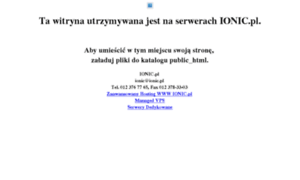Francis.naukas.com
Visit francis.naukas.com| Global rank | 51 649 |
|---|---|
| Daily visitors | 1.59K |
| Daily pageviews | 1.59K |
| Pageviews per user | 1 |
| Rating | |
|---|---|
| Status | Online |
| Latest check |
Countable Data Brief
Naukas.com is tracked by us since October, 2012. Over the time it has been ranked as high as 40 749 in the world, while most of its traffic comes from Venezuela, where it reached as high as 1 763 position. Francis.naukas.com receives about 7.4% of its total traffic. It was owned by several entities, from Miguel Angel Artime Menendez to Redacted by Privacy of Amazings Divulgacion, it was hosted by RIPE Network Coordination Centre, Provider Local Registry and others. While was its first registrar, now it is moved to Dinahosting s.l..
Francis.naukas has the lowest Google pagerank and bad results in terms of Yandex topical citation index. We found that Francis.naukas.com is poorly ‘socialized’ in respect to any social network. According to MyWot and Google safe browsing analytics, Francis.naukas.com is a fully trustworthy domain with no visitor reviews.
Worldwide Audience
Compare it to ...Naukas.com gets 53.7% of its traffic from Venezuela where it is ranked #1763.
Top Countries
| Venezuela | 53.7% | |
| Spain | 25.2% |
Top Ranks
| Venezuela | 1 763 | |
| Spain | 6 846 |
Traffic Analysis
Compare it to ...Francis.naukas.com has 1.59K visitors and 1.59K pageviews daily.
Pageviews
Subdomains Traffic Shares
Danielmarin.naukas.com is the most popular subdomain of Naukas.com with 76.19% of its total traffic.
Top Subdomains
| danielmarin.naukas.com | 76.19% | |
| francis.naukas.com | 7.40% | |
| naukas.com | 4.00% |
This Subdomain
7.4%
SEO Stats
Compare it to ...Francis.naukas.com is not yet effective in its SEO tactics: it has Google PR 0. It may also be penalized or lacking valuable inbound links.
0
Google PR-
Yandex CYHomepage Top Backlinks PR
| angelrls.blogalia.com | 5 |
| zemiorka.blogspot.com | 3 |
| yovivoenella.blogspot.com | 0 |
| worlderlenmeyer.blogspot.com | 0 |
| traduccionmedicatecnicaliteraria.wordpress.com | 0 |
Top Keywords % of search traffic
No data
Domain Registration Data
Compare it to ...Francis.naukas.com domain is owned by Redacted by Privacy Amazings Divulgacion and its registration expires in 7 years.
General Get more Naukas.com whois history
|
Redacted by Privacy Amazings Divulgacion Owner since July 31, 2018 |
||
|---|---|---|
|
7 years left Expires on June 08, 2032 |
12 years old Created on June 08, 2012 |
2 years ago Changed at June 09, 2022 |
Server Information
Compare it to ...Francis.naukas.com uses WordPress CMS and is hosted by Provider Local Registry.
IP Whois Get more Francis.naukas.com server history
-
Provider Local Registry
-
82.98.136.247
IP address
Server Technologies
-
WordPress
CMS
DNS Records
Nameservers
- ns.dinahosting.com
- ns2.dinahosting.com
- ns3.dinahosting.com
- ns4.dinahosting.com
| host | value | ttl |
|---|---|---|
| francis.naukas.com | 82.98.136.247 |
300 |
Safety
Compare it to ...Safety status of Francis.naukas.com is described as follows: MyWOT reports its overall reputation as excellent and Google Safe Browsing reports its status as safe.
Get more Francis.naukas.com reviews
MyWOT
| Overall reputation | Excellent |
|---|---|
| Trustworthiness | Excellent |
| Privacy | Excellent |
| Child safety | Unknown |
Google Safe Browsing
| Website status | Safe |
|---|---|
| Status | ok |
User reviews
| Reputation | Unknown | |
|---|---|---|
|
0 positive0 negative |
||










Social Engagement
Compare it to ...Francis.naukas.com has 0% of its total traffic coming from social networks (in last 3 months) and the most active engagement is detected in Facebook (239 shares)
Social Metrics Get more Francis.naukas.com social history
0%
of total traffic in last 3 months is social0
Facebook likes239
Facebook shares81
Twitter mentions65
Google pluses0
LinkedIn mentions3
Pinterest pins1
StumbleUpon views